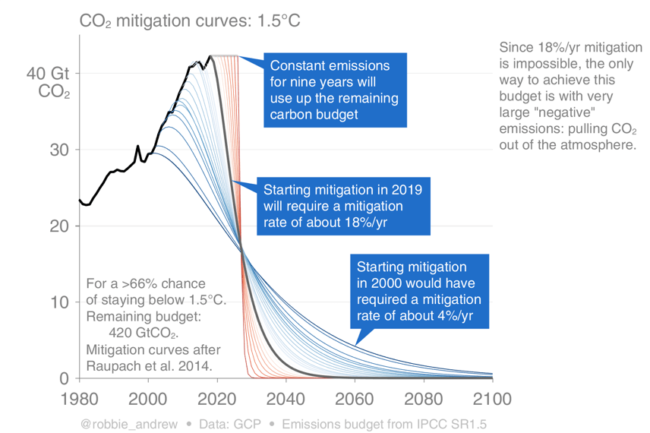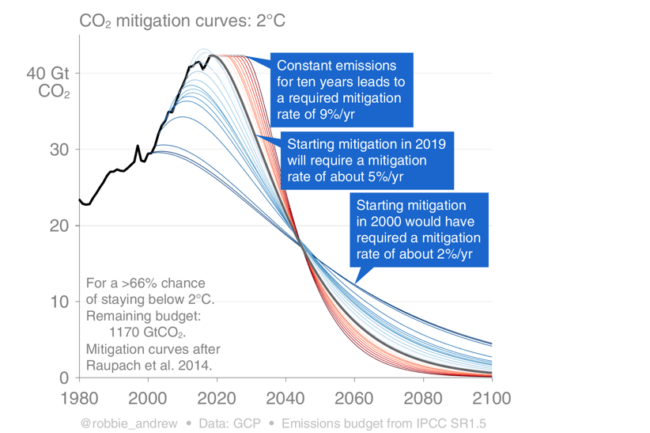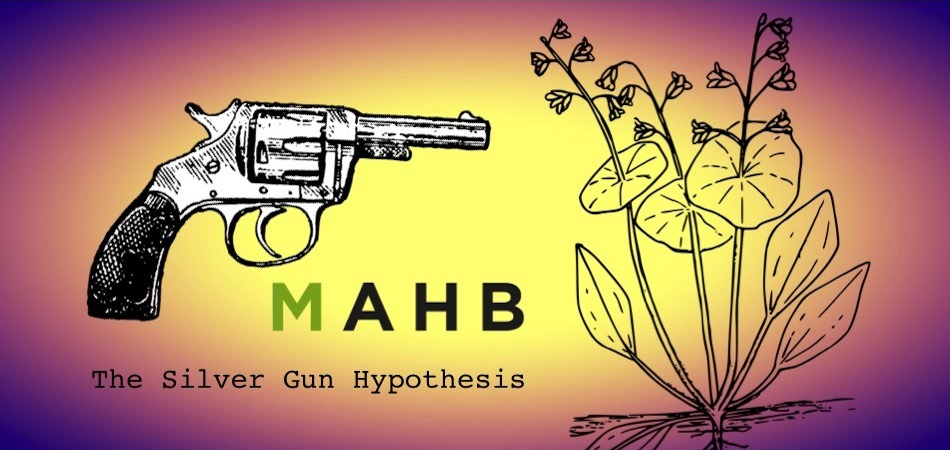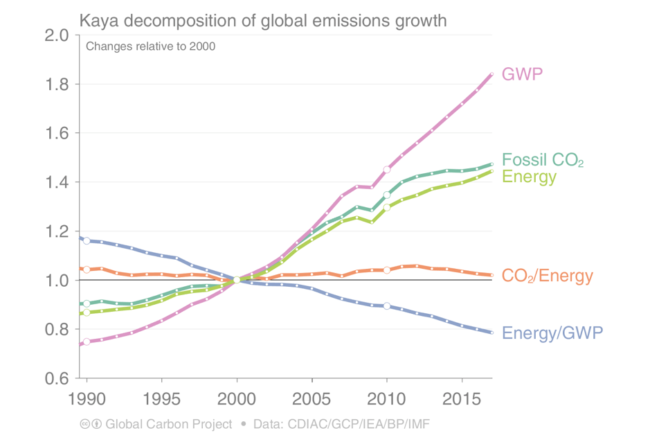File: Download
Author(s): Dr. Delton Chen
As a part of his 5 part series, The Silver Gun Hypothesis, Dr. Delton B. Chen offers his introduction to Part II- The Entropy of Carbon to the MAHB Community. The hypothesis examines living systems in terms of their agency to influence the Earth’s carbon cycle. This agency is described in terms of ‘thermodynamic skills’ and it relates to organisms, human beings, and economies.
“The Silver Gun Hypothesis is a probabilistic theory that multi-cellular organisms, human beings, and economies are all multi-agent systems with characteristic ‘thermodynamic skills’. According to the hypothesis, these skills define the agency of these systems to influence the Earth’s carbon cycle. The hypothesis provides a matrix of skills for all complex living systems, and it proposes that the existing economy does not have the skill needed to achieve carbon neutrality. The hypothesis concludes that the required skill is available with the introduction of a parallel economy for abating and sequestering carbon. The hypothesis suggests that humanity could access additional agency for carbon neutrality and a safe climate, but humanity has a cognitive ‘blind spot’ with regards to how this should be done. ”
Part II of the Silver Gun Hypothesis will be presented on the MAHB in May 2019 as a summary blog and a working paper for download.
The Silver Gun Hypothesis: New Model for a Sustainable Carbon Economy
Introduction
Part I – Carbon is King
Welcome to Part II of the Silver Gun Hypothesis. In Part I we considered carbon’s role in shaping the biosphere and the Earth’s climate. In Part I we noted that all life is carbon-based, and that all living systems dissipate energy for homeostasis. These ideas were highlighted to prepare us for the Silver Gun Hypothesis, which includes a thermodynamic interpretation of the economics of climate change and an optimal policy solution for a safe climate.
‘Brown economic growth’ is a major driver of the climate crisis because it creates demand for energy, including fossil fuels, and it contributes to rising carbon emissions. Climate change forecasting by Garrett (2012), Nordhaus (2016), and Raftery et al. (2017), conclude that there is currently a negligible chance of achieving net-zero carbon emissions by mid-century because of brown growth (see Figure II-1). According to Raftery et al. (2018), brown growth is leading to 3.2°C of global warming by 2100 (2.0-4.9°C at 90% confidence), which is significantly greater than the 1.5°C/2.0°C ambition of the 2015 Paris Climate Agreement—the presumed threshold for a safe climate. A crucial challenge facing the humanity is a lack of agency in mitigating carbon emissions to achieve a net-zero carbon balance by mid-century (see Figure II-2); or to achieve a net-negative carbon balance later in this century.
The Silver Gun Hypothesis provides a thermodynamic interpretation of the agency that can influence the Earth’s carbon balance. This includes the agency of complex organisms, the agency of human beings, and the agency of civilization through its economic systems. The Silver Gun Hypothesis is an extension of the Holistic Market Hypothesis (HMH) that was developed by Chen, van der Beek and Cloud (2017, 2019). The HMH was developed to assess the benefits of ‘carrot and stick’ carbon pricing, whereby the ‘stick’ is the standard carbon tax, and the ‘carrot’ is the Global Carbon Reward.
Figure II-1. Kaya decomposition of CO2 emissions shows that Gross World Product (GWP) is being produced more efficiently in terms of energy, but consumption is not constrained and CO2 emissions are trending higher. The data indicate that there is a relative decoupling of GWP from CO2 emissions, but there is not an absolute decoupling (reproduced from globalcarbonproject.org).
A novel feature of the HMH is the conceptualization of ‘carrot and stick’ climate policies as biophysical networks with ‘complementary-and-opposite’ economic relationships. The HMH is unorthodox because it makes the claim that complementary-and-opposite carbon pricing is related to the ‘entropy of carbon in the environment’. Entropy is a thermodynamic concept and is not included in classical/neoclassical economic theories, methods or policies. A second novel feature of the HMH is the application of a money-energy relation developed by Garrett (2012), and this relation is used to make a connection between carbon pricing and the allocation of usable energy in the economy.
The aim of the Silver Gun Hypothesis is to complete the thermodynamic analysis of carbon pricing that was initiated by Chen, van der Beek and Cloud (2017, 2019) with the HMH. The Silver Gun Hypothesis provides the additional theory that explains why ‘carrot and stick’ carbon pricing can be used to achieve carbon neutrality, and to explain the origins of ‘complementary-and-opposite’ relationships. The Silver Gun Hypothesis is promising in that it provides a potential solution to major economic conundrums related to climate change, including (1) the growth versus degrowth paradox, (2) Jevons paradox, (3) high versus low time-discounting of climate damages, (4) tragedy of the horizon paradoxes, and other related conundrums.
Scientist and economist are encouraged to discuss the Silver Gun Hypothesis.
Important to note is that thermodynamics does not explain ‘how’ systems work, including organisms and economies. Thermodynamics is a branch of physics that explains ‘why’ systems work in terms of the physical causality provided by energy potentials and changing entropy. It appears that entropy is the missing link that explains why orthodox climate policies are failing to address brown growth, and why the political establishment is failing to resolve the climate crisis.
Subsequently, the Silver Gun Hypothesis offers an explanation for ‘why’ the economy is heading for high carbon emissions, and ‘why’ orthodox policies are inadequate for achieving a safe climate. An exciting feature of the Silver Gun Hypothesis is that it invites a direct comparison between economic systems and living organisms. If the hypothesis is found to be reliable, then it could be a breakthrough in evolutionary biology, climatology, and economics.


Figure II-2. Global CO2 emissions since 1980 show that the world economy is poorly conditioned to remain below (a) 1.5°C or (b) 2°C of global warming. A radical and systemic change to the world economy is needed to achieve the ambition of the 2015 Paris Climate Agreement (reproduced from globalcarbonproject.org).
References
Chen, D.B., van der Beek, J. and Cloud, J., 2017. Climate mitigation policy as a system solution: addressing the risk cost of carbon. Journal of Sustainable Finance & Investment, 7 (3): 1-42.
https://www.tandfonline.com/doi/abs/10.1080/20430795.2017.1314814
Chen, D. B. (2018). Central Banks and Blockchains: The Case for Managing Climate Risk with a Positive Carbon Price. In: Transforming climate finance and green investment with blockchains. Elsevier. A. Marke, Ed., Chapter 15.
https://www.sciencedirect.com/science/article/pii/B978012814447300015X
Chen D.B., van der Beek J., Cloud J. (2019) Hypothesis for a Risk Cost of Carbon: Revising the Externalities and Ethics of Climate Change. In: Doukas H., Flamos A., Lieu J. (eds) Understanding Risks and Uncertainties in Energy and Climate Policy. Springer, Cham
https://link.springer.com/chapter/10.1007/978-3-030-03152-7_8
Chen, D. B. (2018). Utility of the Blockchain for Climate Mitigation. The Journal of British Blockchain Association, 1 (1): 1-9.
https://jbba.scholasticahq.com/article/3577-utility-of-the-blockchain-for-climate-mitigation
Chen, D. B. (2018). The Silver Gun Hypothesis: New Model for a Sustainable Carbon Economy. https://mahb.stanford.edu/?s=the+silver+gun+hypothesis
Garrett, T. J. (2012). No way out? The double-bind in seeking global prosperity alongside mitigated climate change. Earth System Dynamics, 3, 1–17.
Nordhaus, W. D. (2016). Projections and Uncertainties About Climate Change in an era of Minimal Climate Policies (Cowels Foundation Discussion Paper No. 2057). New Haven, CT: Yale University.
Pigou, A. C. (1920). The Economics of Welfare. London: Macmillan.
Raftery, A. E., Zimmer, A., Frierson, D. M., Startz, R., & Liu, P. (2017). Less than 2 C warming by 2100 unlikely. Nature Climate Change, 7, 637–641.
Zappalà, G. (2018). Central Banks’ role in Responding to Climate Change: Monetary Policy and Macroprudential Regulation. Thesis. Universita’ degli studi di Padova. Dipartimento di Scienze Economiche.
About the Author
Dr. Delton B. Chen is an Australian engineer who holds a Ph.D. from the University of Queensland for his hydrogeological study of Heron Island, located in the Great Barrier Reef. Delton is a modeler/analyst in groundwater, hydrology, hot-rock energy, and greenhouse mitigation. Delton is co-founder of Global 4C and the lead developer of a policy to mitigate climate change with a Central Bank Digital Currency (CBDC).
Collaborations
The following Google Group is set-up for discussing and collaborating on the Silver Gun Hypothesis:

Contacts


The views and opinions expressed through the MAHB Website are those of the contributing authors and do not necessarily reflect an official position of the MAHB. The MAHB aims to share a range of perspectives and welcomes the discussions that they prompt.


